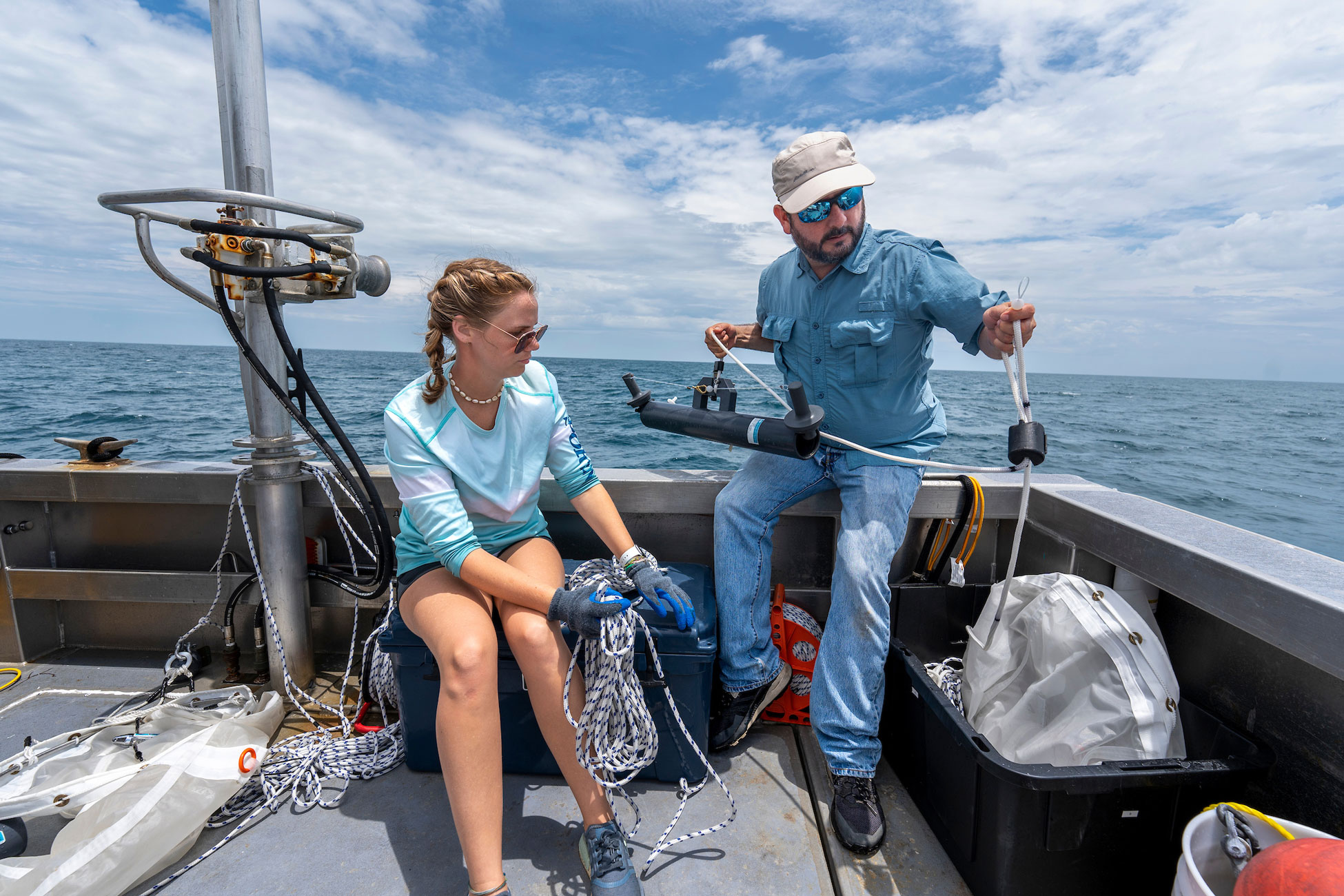
About 30 miles off the coast of eastern North Carolina stands Frying Pan Tower, a local maritime relic that looms over a frying pan-shaped, sandy ridge known as Frying Pan Shoals. Treacherous for boaters yet a saltwater angler’s dream, the shoals are known for strong currents and shallow waters that have caused hundreds of shipwrecks through the years, but also harbor a thriving, high-producing ecosystem that includes an elaborate web of marine life from microscopic phytoplankton to shrimp, crab, and baitfish, to sea birds, loggerheads and porpoise, to grouper, billfish and sharks.
Frying Pan Shoals also has a lot of sand. So much sand, that the Bureau of Ocean Energy Management (BOEM), the federal agency responsible for managing the nation’s offshore resources, understands it is a possible place for dredging for future beach refurbishment projects in the Cape Fear region; but the risks and impacts of dredging here are unknown. For years, the region’s beaches have been eroding at alarming rates, and sand to build up the beaches has been increasingly harder to come by.
“Our region is at a deficit for sand,” said Dr. Joe Long, director of UNC Wilmington's Coastal Engineering program. “UNCW is perfectly poised to provide data and models that can be used by BOEM to help determine if Frying Pan Shoals is a viable source for sand mining, and if it can be done safely and effectively without harming the important ecosystem.”
Dr. Long is co-leading a $2 million, multidisciplinary research project in collaboration with BOEM. Over the next four years, Dr. Long, his colleagues and students at UNCW will take dozens of trips to Frying Pan Shoals to collect oceanographic measurements, biological samples and geological surveys that will help BOEM understand the shoal ecology.
“We have everything in-house to tackle this important project and understand this complicated environment from sea floor to the surface,” said Dr. Long. “We have experts in physical oceanography, biology, fishery science and geology-- all of these people and disciplines are connecting to better understand the complex interactions at Frying Pan Shoals. In addition, we have the important infrastructure of the UNCW Center for Marine Science (CMS), which provides the research vessels, the technical support and the expertise to make it all possible.”
Dr. Ken Halanych, executive director of CMS, said this type of multidisciplinary team approach “exemplifies how CMS researchers can build on each other’s strengths to address complex community issues. In this case, the team is establishing a baseline understanding of the Frying Pan Shoals’ ecosystem, which is essential for making scientifically sound policy decisions and ensuring safe and healthy coasts.”
The project is also a valuable applied learning opportunity for student researchers. Biology students towing nets to collect zooplankton on the shoals will be interacting with oceanography students who are deploying instruments to measure waves and currents and geology students who are surveying the layers of the shoals. Gena Leib, a graduate student in Dr. Christian Briseño-Avena’s lab, is studying copepods--pill-shaped, bug-like sea animals that are a food source for larger animals.
“I’m looking at the biological side of the research,” said Leib. “My goal is to identify species of copepods along the shoals which will give us important information about the bigger species being lured there and help us determine if there are time periods or places where dredging sand would be less intrusive to the habitat.”
The first field sampling began this past summer aboard UNCW’s research vessels, the R/V Cape Fear and the R/V Seahawk, and will continue through summer 2025.
UNCW Project Investigators:
This article has the following tags: Academics Engagement College of Science & Engineering myUNCW Research & Innovation